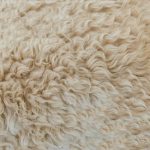When it comes to storing your voile clothing, you need to consider a few key factors to maintain their beauty and integrity. First, you'll want to ensure each piece is clean before storage, as any dirt or residue can lead to unwanted damage over time. After that, how you fold or roll these delicate garments plays a crucial role in minimizing wrinkles. However, the choice of storage location and materials is just as important. Curious about the best practices to keep your collection in pristine condition? Let's explore some effective strategies.
Table of Contents
Assessing Your Voile Collection
Before you dive into storing your voile clothing, take a moment to assess your collection and decide which pieces you wear most often. This step is crucial; it helps you prioritize what to keep accessible and what can be stored away. Look at each item—do you love it, or has it been collecting dust?
Next, sort your voile pieces into categories. You might want to group them by season, occasion, or style. This organization not only makes it easier to find your favorites but also helps you identify any gaps in your wardrobe. If you find multiple items that serve the same purpose, consider which ones you truly enjoy wearing.
As you assess, think about the condition of each piece as well. If you've got items with fading or wear, it might be time to let them go or repair them before storing. Remember, a streamlined collection not only saves space but also ensures you'll reach for the pieces you love most.
Cleaning Before Storage
Before you store your voile clothing, it's essential to give them a good wash to remove any dirt or sweat.
Make sure to tackle any stains using effective removal techniques to keep your garments looking fresh.
Taking these steps will help preserve the fabric and ensure your pieces remain in great condition for next season.
Pre-storage Washing Tips
How do you ensure your voile clothing stays in great condition during storage? The key lies in proper pre-storage washing.
Start by checking the care labels on your garments; different fabrics may require specific washing methods. If your voile clothing is machine washable, use a gentle cycle with cold water to prevent any damage. Avoid using bleach or harsh detergents, as they can fade colors and weaken fibers.
If you prefer hand washing, fill a basin with cold water and add a mild detergent. Gently agitate the water and submerge your voile pieces, allowing them to soak for about 10-15 minutes. Rinse thoroughly to remove any soap residue, then lay them flat on a clean towel to absorb excess water. Avoid wringing or twisting, as this can distort the fabric.
Once clean, let your voile clothing air dry away from direct sunlight to prevent fading. It's important not to hang them, as this might stretch the fabric.
After drying, ensure your garments are completely free of moisture before folding them for storage. Following these tips will help maintain the quality and appearance of your beloved voile pieces.
Stain Removal Techniques
To keep your voile clothing looking pristine, tackle any stains as soon as possible before storing them away. Start by identifying the type of stain—whether it's food, grease, or ink—as this will guide your cleaning method.
For food stains, gently scrape off any excess, then rinse the fabric under cold water. Apply a mild detergent directly to the stain, let it sit for about 10 minutes, and then rinse again.
For grease stains, sprinkle baking soda or cornstarch on the area to absorb the oil. After a few minutes, brush it off and treat the remaining stain with a mixture of dish soap and warm water. Dab it with a clean cloth, then rinse thoroughly.
If you're dealing with ink stains, use rubbing alcohol. Dab a cotton ball in alcohol and gently blot the stain, working from the outside in to prevent spreading. Rinse well afterward.
Always check the care label on your voile clothing before applying any cleaning solution. Once the stains are removed, allow your garments to air dry completely before folding or hanging them for storage. This ensures you won't trap any moisture, preventing mildew or odors.
Folding Techniques for Voile
When it comes to folding voile clothing, you've got a few effective techniques at your disposal.
You can stick to the basic folding method, try rolling for space-saving benefits, or consider storing in drawers for easy access.
Let's explore these options to keep your voile garments looking their best.
Basic Folding Method
Start by laying your voile clothing flat on a clean, smooth surface to prevent creases. Make sure the fabric is completely wrinkle-free before you start folding.
Next, take one side of the garment and fold it toward the center, aligning the edge with the middle of the piece. Repeat this with the opposite side, creating a neat, symmetrical shape.
Now, focus on the sleeves or any additional fabric. If your garment has sleeves, fold them inwards toward the center as well. This keeps the silhouette streamlined and avoids unnecessary bulk.
Once the sleeves are tucked in, you can fold the garment in half from the bottom up, ensuring the hem aligns with the neckline.
For longer pieces, consider folding them into thirds instead of halves for easier storage. Hold the garment at both ends and gently fold it down, creating a compact shape that fits well in your storage space.
Rolling Technique Benefits
While the basic folding method is effective, using a rolling technique can further minimize wrinkles and save space in your storage.
Rolling your voile clothing not only helps maintain its delicate fabric but also allows you to fit more items into your drawers or suitcase. When you roll, you create a compact shape that reduces the likelihood of creases forming.
To roll your voile garments, start by laying the item flat on a surface. Smooth out any wrinkles, then fold the sleeves inwards if applicable. Next, roll the fabric tightly from the bottom up, ensuring a snug fit to preserve its shape. This technique is particularly beneficial for lightweight fabrics, as it helps prevent any stretching or distortion.
Another advantage of rolling is that it makes it easier to see all your pieces at a glance. You can quickly identify what you have without rummaging through stacks of folded items.
Plus, when you travel, rolled clothing takes up less space, allowing you to pack more efficiently. So, give the rolling technique a try and enjoy the benefits of wrinkle-free, space-saving storage for your voile clothing.
Storing in Drawers
To keep your voile clothing in pristine condition, mastering effective folding techniques for drawer storage is essential. Start by laying your garment flat on a clean, smooth surface. Smooth out any wrinkles gently with your hands to avoid creases.
Next, fold the sleeves toward the center, creating a rectangular shape. If your garment has a longer length, you can fold it in half vertically, bringing the hem up toward the neckline. Make sure the fabric lies flat without any bunching.
For skirts or dresses, gather the fabric at the waist and fold the garment in half, then in thirds. This method minimizes fabric stress and preserves the shape.
When stacking your folded voile items in drawers, avoid piling them too high, as this can create unnecessary pressure and lead to wrinkles. Instead, arrange them in a way that allows you to see each piece easily.
Lastly, consider using drawer dividers to keep your voile clothing organized and separated from other fabrics. This way, you'll maintain their delicate texture and vibrant colors, ensuring your favorite pieces remain ready to wear.
Choosing the Right Storage Location
Choosing the right storage location for your voile clothing can significantly extend its lifespan and maintain its delicate texture.
First, pick a space that's cool, dry, and dark. Voile can be sensitive to light and heat, so avoid areas near windows or heating vents. A closet or a dedicated storage bin works best.
Next, consider the temperature. You don't want your voile clothing stored in a spot that experiences extreme fluctuations, like an attic or a basement. Ideally, aim for a stable environment, as consistent temperatures help preserve the fabric.
Also, think about accessibility. You'll want a location that makes it easy for you to retrieve your items without unnecessary hassle. If you plan to wear your voile clothing frequently, keep it at eye level or in a place that's easy to reach.
Lastly, avoid overcrowding your storage space. Allow your voile garments to breathe, as this prevents creasing and helps maintain their shape.
Preventing Moisture and Mildew
Maintaining a dry environment is vital for preventing moisture and mildew from damaging your voile clothing. To keep your delicate fabrics in top shape, consider these essential tips to avoid excess moisture:
| Tip | Description | Frequency |
|---|---|---|
| Use Silica Gel | Place silica gel packets in storage containers to absorb humidity. | Every storage session |
| Ventilation | Ensure your storage area has good airflow to reduce dampness. | Daily |
| Humidity Check | Use a hygrometer to monitor humidity levels; aim for 30-50%. | Weekly |
| Dry Cleaning | Clean your voile clothing before storage to eliminate moisture. | Before seasonal storage |
Seasonal Rotation Tips
Rotating your voile clothing seasonally not only keeps your wardrobe fresh but also helps preserve the fabric's quality.
To start, assess your current collection at the change of each season. Identify which pieces you've worn frequently and those that have remained untouched. This will give you a clear idea of what to keep accessible and what to store away.
When it's time to rotate, carefully wash and dry your voile garments according to their care instructions. Ensure they're completely clean before storing them, as stains can set over time.
For storage, choose breathable garment bags or cotton sheets to protect your voile pieces from dust and light exposure.
Organize your items by season, placing lighter colors and fabrics at the front for spring and summer, while storing darker, heavier pieces for fall and winter.
You might also consider a rotation schedule, planning to switch out your wardrobe every three months. This not only keeps your clothing in optimal condition but also allows you to rediscover pieces you may have forgotten about.
Regularly rotating your voile clothing will help maintain its beauty and longevity.
Frequently Asked Questions
Can I Store Voile Clothing in Plastic Bags?
You can store voile clothing in plastic bags, but it's not ideal. Plastic can trap moisture, leading to mildew. Instead, opt for breathable fabric bags to keep your garments fresh and prevent any damage.
How Long Can I Store Voile Without Damage?
You can safely store voile for several months without damage if it's kept in a cool, dry place. Just avoid direct sunlight and high humidity to prevent any fading or deterioration of the fabric.
Is It Safe to Hang Voile Clothing?
Yes, it's safe to hang voile clothing, but use padded hangers to prevent stretching. Avoid prolonged exposure to sunlight, which can fade colors. Always ensure the fabric is clean before hanging to maintain its quality.
What Temperature Is Ideal for Storing Voile?
The ideal temperature for storing voile is between 60°F to 75°F. Keeping it in a cool, dry place helps maintain its delicate fibers and prevents any damage, ensuring your clothing stays in great condition.
Should I Use Mothballs or Cedar for Storage?
You should avoid mothballs, as they can leave a strong odor and may damage fabrics. Cedar's a better choice; it repels insects naturally while adding a pleasant scent, keeping your clothes safe and fresh.
- How Does Ring Spun Cotton Affect Garment Fit and Shape Retention? - August 13, 2024
- What Are the Challenges in Producing Ring Spun Cotton? - August 13, 2024
- Is Ring Spun Cotton Suitable for Plus-Size Clothing? - August 13, 2024







